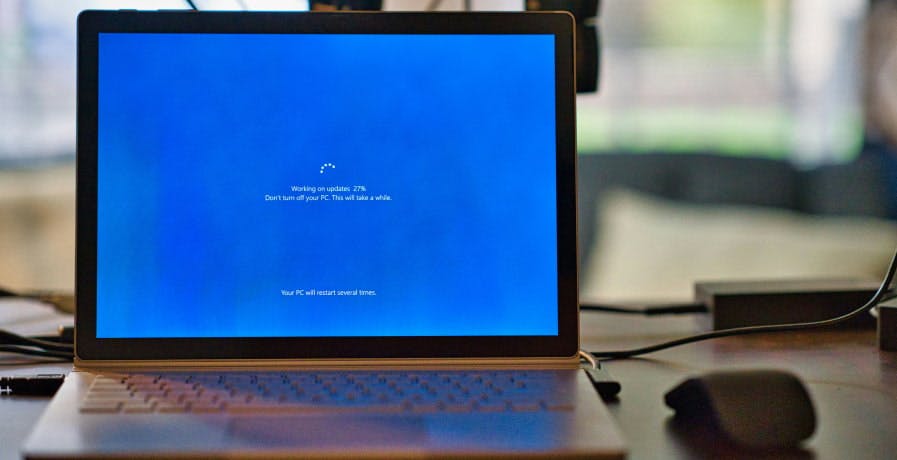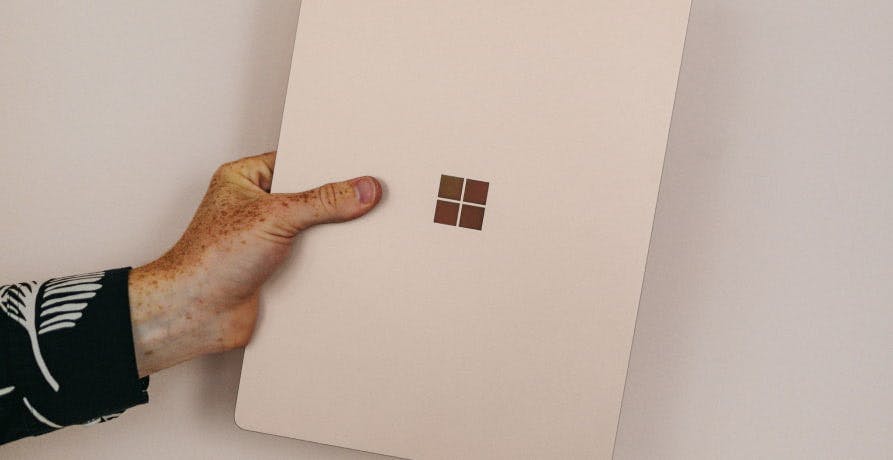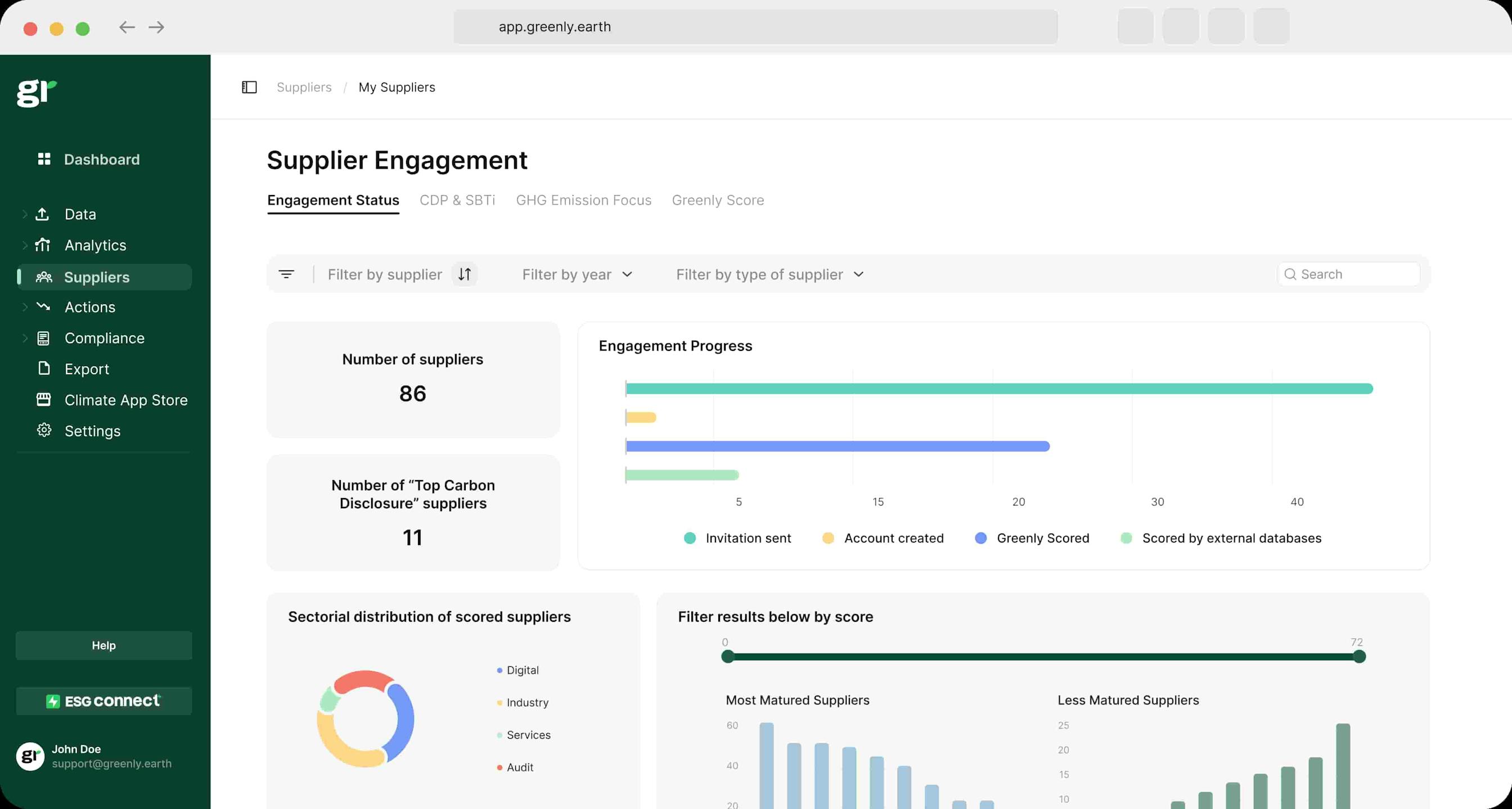
What are the 3 Pillars of Corporate Sustainability?
In this article, we'll explore what the 3 pillars of corporate responsibility are, why they're important, and how businesses can turn them into practical action.
ESG / CSR
Industries



In 2025, companies are taking their sustainability efforts to the next level – with large corporations such as Microsoft or Walmart releasing their own sustainability initiatives, including Microsoft’s Procurement Sustainability Assurance Guidance.
This sustainability guide released by Microsoft is set to help demonstrate that suppliers are adhering to current sustainability standards
In this article, we’ll explain what Microsoft’s Procurement Sustainability Assurance Guidance is, how it works, the benefits, and challenges of this sustainability initiative.
Microsoft’s Procurement Sustainability Assurance Guidance is a framework which illustrates how Microsoft’s supply chain is adhering to current sustainability standards, and allows suppliers to effectively reduce their emissions.
💡This guidance can help to encourage suppliers to employ the necessary environmental and socially practices required for sustainability reporting, which is only becoming more imperative as the global push for greater sustainability continues.
Here are some of the key components of Microsoft’s Procurement Sustainability Assurance Guidance:
👉 Remember, Microsoft’s Procurement Sustainability Assurance Guidance is a part of a larger effort created by Microsoft to reduce its carbon footprint and become carbon negative by 2030 – pairing up with the the Carbon Disclosure Project (CDP) to ensure productive monitoring of their supply chain emissions.
The table below will provide a reference for some of Microsoft's current sustainability initiatives:
| Initiative | Description | Impact |
|---|---|---|
| Carbon Negative by 2030 | Microsoft aims to remove more carbon from the atmosphere than it emits by 2030. This involves reducing carbon emissions across its operations and products. | By reducing its carbon footprint, Microsoft contributes to mitigating climate change and influencing other companies to adopt similar goals. |
| Water Positive by 2030 | The company’s goal is to replenish more water than it consumes by focusing on water conservation, efficiency, and replenishment projects. | This initiative helps address water scarcity and ensures sustainable water use in water-stressed regions. |
| Zero Waste by 2030 | Microsoft is working to eliminate waste by reusing, recycling, or composting all of its operational waste. This includes end-of-life recycling for its data centers. | Promotes circular economy practices and reduces landfill use, conserving resources and reducing environmental impact. |
| Protect Ecosystems | Microsoft is investing in biodiversity preservation by partnering with organizations to protect ecosystems and support sustainable practices. | Supports global biodiversity, enhances ecosystem resilience, and protects endangered species. |
| Microsoft Cloud for Sustainability | A digital tool that helps organizations track, report, and reduce their environmental impact through data-driven insights. | Enables businesses to improve their sustainability practices by providing actionable insights, reducing their carbon footprints, and aligning with ESG goals. |
| Supply Chain Sustainability (Procurement Sustainability Assurance) | Focuses on encouraging suppliers to adopt sustainable practices, including carbon reduction, responsible sourcing, and efficient energy use. | Reduces the environmental impact of Microsoft’s supply chain and helps standardize sustainability practices across industries. |

Microsoft’s Procurement Sustainability Assurance Guidance works by providing a detailed guide to ensure suppliers effectively reduce their GHG emissions and align their current sustainability initiatives with Microsoft’s own ambitious goals – such as by working to become carbon negative by 2030.
💡 It is important to remember that being carbon negative refers to your net-emissions, meaning that companies who engage in this title must remove more carbon dioxide emissions from the atmosphere than they emit.
Here are the key guidelines suppliers will be obligated to follow under Microsoft’s Procurement Sustainability Assurance Guidance:
👉 As a whole, Microsoft’s guide works to provide suppliers with a framework to manage and report their carbon emissions by offering various tools and resources to help make their calculations, and subsequent sustainability reports, more accurate.
Microsoft values the following ideals in the midst of their sustainability journey:
One of the hallmark qualities to Microsoft’s Procurement Sustainability Assurance Guide is by encouraging collaboration with suppliers to boost sustainable procurement practice.
This can help Microsoft not only achieve their goal of reducing carbon emissions by 55% by 2030, but can encourage suppliers to employ these sustainable business practices – demonstrating and spreading the importance of transparency and accountability across the world, as Microsoft is one of the most recognized brand names in the world.
💡In addition to this, Microsoft provide suppliers with various trainings such as assistance in GHG accounting or webinars to ensure transparency and compliance in the Supplier Portal.
Microsoft’s Procurement Sustainability Assurance Guide is a single component a part of a broader sustainability initiative developed by Microsoft.
Regardless, Microsoft’s Procurement Sustainability Assurance Guide embodies several environmental goals to encourage suppliers to help support Microsoft in their ultimate emission reduction goals.
Here are some of the environmental goals depicted in Microsoft’s Procurement Sustainability Assurance Guide:
👉 In order to be successful in these goals, Microsoft must engage their suppliers and provide them with adequate resources to help manage their business practices more sustainably.

Microsoft is bound to reap several benefits via the use of their sustainability initiatives, such as by encouraging supplies to reduce emissions, boosting their brand reputation, and engaging business partners to take similar sustainable actions.
Here are some of the benefits to those who adhere to Microsoft’s Procurement Sustainability Assurance Guide:
👉 The benefits of a sustainability initiative such as Microsoft’s Procurement Sustainability Assurance Guide help to curate a more well-rounded approach to sustainability, where suppliers will be subject to their emissions and environmental impact as well.

For a company with global operations as large as Microsoft, implementing a sustainability initiative such as Microsoft’s Procurement Sustainability Assurance Guide to scale can be challenging as there are dozens of suppliers with varying levels of available resources from around the world.
💡 The main obstacle from Microsoft achieving their is ability or lack of ability in getting suppliers to commit to following their procurement sustainability assurance guide.
👉 Ultimately, Microsoft’s Procurement Sustainability Assurance Guide can help suppliers to implement more sustainable practices, but successfully recruiting all of Microsoft’s suppliers to commit to these more eco-friendly protocols could require continuous adjustments and considerations.

In 2025, Microsoft released an update to ensure they work towards their goal of becoming carbon negative by 2030 – especially in light or their target to tackle scope 3 emissions.
Here's a breakdown of Microsoft's 2025 Disclosure Procurement Sustainability Data Integrity Requirements:
Remember, the scope 3 categories 1-8 for microsoft are as follows:
in scope 1 or 2)
👉 Overall, Microsoft's Supplier Code of Conduct will require suppliers to provide independent, third-party assurance to verify their GHG emissions data.
Microsoft is likely to continue adjusting their current sustainability and procurement process to reduce emissions, but the future success of specific initiatives such as Microsoft’s Procurement Sustainability Assurance Guide is currently unknown and difficult to predict.
💡If Microsoft is to achieve their ambitious goals by 2030, they will still have other obstacles to successfully meet their other long-term objectives – such as by working to remove the equivalent of all carbon dioxide emissions created by the company since Microsoft was founded in 1975 by 2050.
Unsurprisingly, this would require renewed commitment from suppliers to achieve additional environmental goals – especially if they’re more demanding than the initial goals suppliers were committed under.
Furthermore, Microsoft may decide to only engage with suppliers who fit the preliminary mold according to their sustainability procurement guide. As a result, if companies want to work with Microsoft – they will need to engage in their own individual sustainability journey beforehand, and Greenly can help.
If reading this article Microsoft’s Procurement Sustainability Assurance Guidance has made you interested in reducing your carbon emissions to further fight against climate change – Greenly can help you!
Aligning your business to comply with sustainability initiatives such Microsoft's can be challenging, but don’t worry – Greenly is here to help. Click here to schedule a demo to see how Greenly can help you find ways to improve energy efficiency and decrease the dependency on fossil fuels in your own company.
Greenly can help you make an environmental change for the better, starting with a carbon footprint assessment to know how much carbon emissions your company produces.
Click here to learn more about Greenly and how we can help you reduce your carbon footprint.
